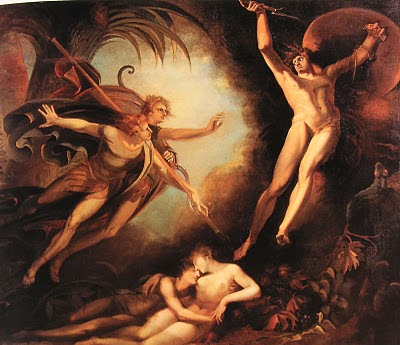
I've finished writing my presentation for the panel at the German Studies Association and have sent it off to the moderator of the panel. It is not my final word on the subject; after all, the presentation is limited to 20 minutes. That is the form of these academic panels. The real work will begin when I return and attempt to put everything I know into a couple of essays for publication.

Herewith a few thoughts that are not in my presentation, and they concern the rejection of neo-classical, French aesthetics in German letters in the 18th century. Let me start with Ernst Cassirer's nice summation of the essence of this aesthetics: the work of art, be it poetry, painting, sculpture, "is more perfect according to its degree of success in reflecting the object itself unencumbered with the cloudy spots and distortions resulting from the nature of the subject." The artistic program of the "Sturm und Drang" poets in Germany was predicated on the categorical rejection of this attitude and the introduction into art of "the cloudy spots and distortions." (One can see that neoclassicism actually had a long shelf life. The sculpture here, by Antonio Canova, was executed in 1814. Not to forget that architecture in America in the early 19th century was heavily reliant on neoclassical ideas: think Monticello.)

Goethe was a major figure of this generation of poets in the early 1770s in Germany. In a wonderful review, which appeared in the "organ" of the Sturm und Drang, the Frankfurter Gelehrten Anzeigen in 1772, he wrote that he preferred a wooden leg to the dozens of "ivory feet" of the nymphs in Salomon Gessner's pastoral tales. In a review of "Poems by a Polish Jew," he praised the poet for abandoning the family trade in favor of poetry, but criticizes him for bringing nothing from his background into the poetry. Instead, he is no different from all the other "powdered" heads to be found in good society and on the promenades.
When one reads about the Sturm und Drang, particularly in graduate school, one has the feeling that the rejection of neoclassical aesthetics came about over night. But is has a genealogy, beginning with Bodmer and Breitinger in Zurich. Of course, one cannot say that the two Swiss writers were rejecting French models. They were simply trying to introduce something new into the literary discussion. From Longinus, translated by Boileau, the French neoclassicist par excellence, they assimilated the idea that poetry is more pleasing if it is not perfect. Longinus, defending "lofty geniuses," preferred "grandeur with some attendant faults" to "success which is moderate but altogether sound and free of error." He went on to say that "invariable accuracy incurs the risk of pettiness, and in the sublime, as in great fortunes, there must be something which is overlooked." Thus Bodmer and Breitinger introduced the idea of "irregularities."
Bodmer, who translated John Milton's Paradise Lost into German, wrote a very long treatise on the marvelous (das Wunderbare) in poetry, which was basically a defense of Milton's epic against the criticisms of Voltaire and other French writers. Voltaire had objected to the lack of correspondence between what was represented in the epic (e.g., the battle between the bad and the good angels) and the empirically experienced laws of nature. Gottsched in Leipzig was, of course, on the side of Voltaire. Besides defending Milton's language, Bodmer also drew on Leibniz's notion of "possible worlds." Such worlds may not be accessible to the senses, but they are to the imagination, especially the imagination of the poet. Such worlds have their own probability, and poetry has as its subject the imitation of them.

I realize that I have said little about the sublime itself, but it was the sublime in writing that, for Bodmer and Breitinger, was represented by Milton's epic. Their influence on the continuing preoccupation with the sublime until the end of the 18th century and beyond can be seen in the oeuvre of Henry Fuseli, the Swiss-born artist and disciple of Bodmer who executed an entire cycle of paintings on Milton's Paradise Lost. The painting at the top of this post, Satan Starting, Touched by Ithuriel's Lance, is described in book 4 of the epic. As an aside, this painting disappeared after 1779, only to reappear in 1994, in the auction of the estate of Rudolf Nurejev, who has been described as a "dancer who could pause in mid-air." If one compares the poses of Nurejev here and that of Satan in Fuseli's painting, it is easy to see why the dancer would have been drawn to this work.
Photo credit: Lessing Photo


No comments:
Post a Comment